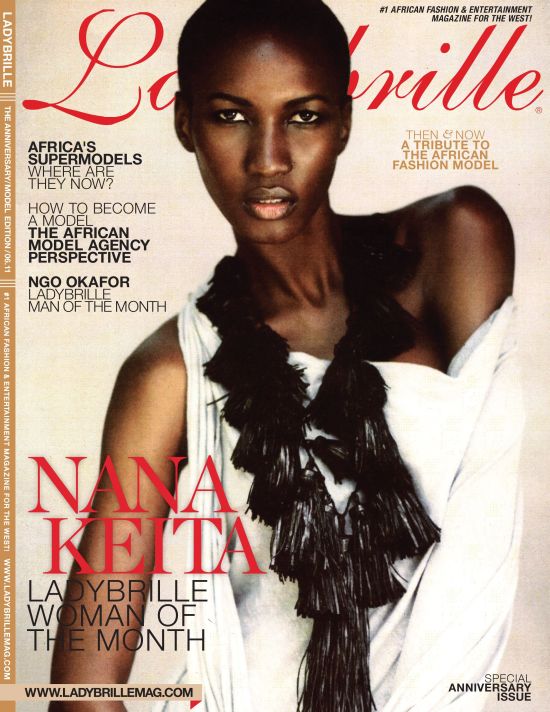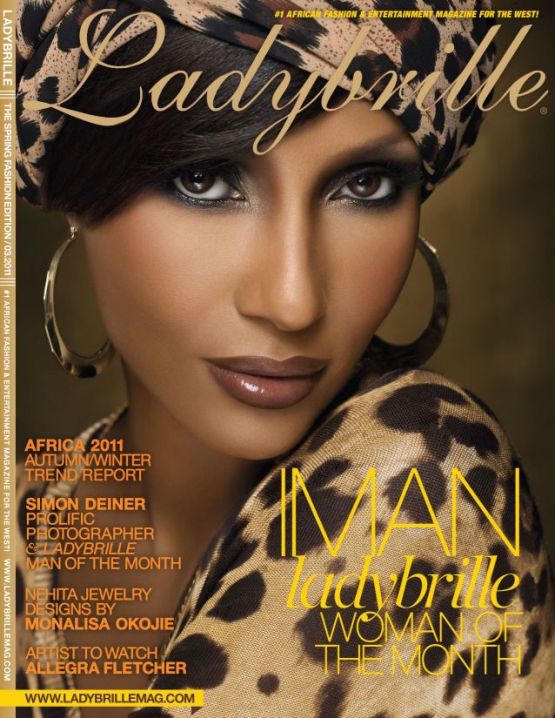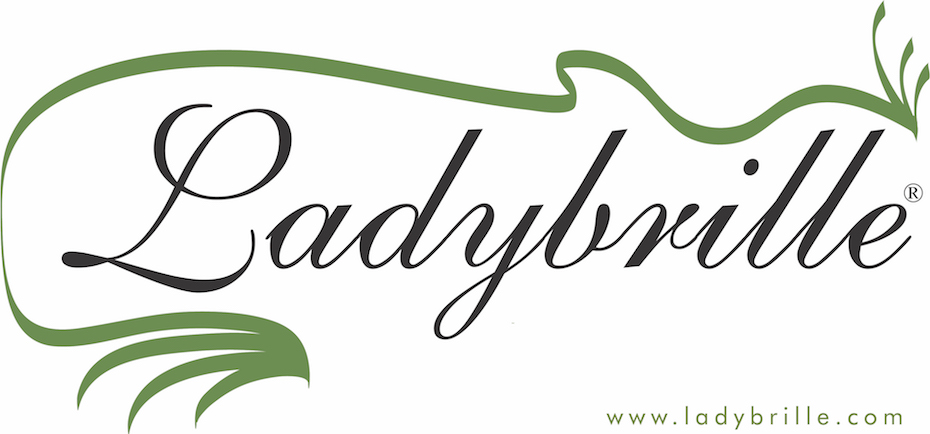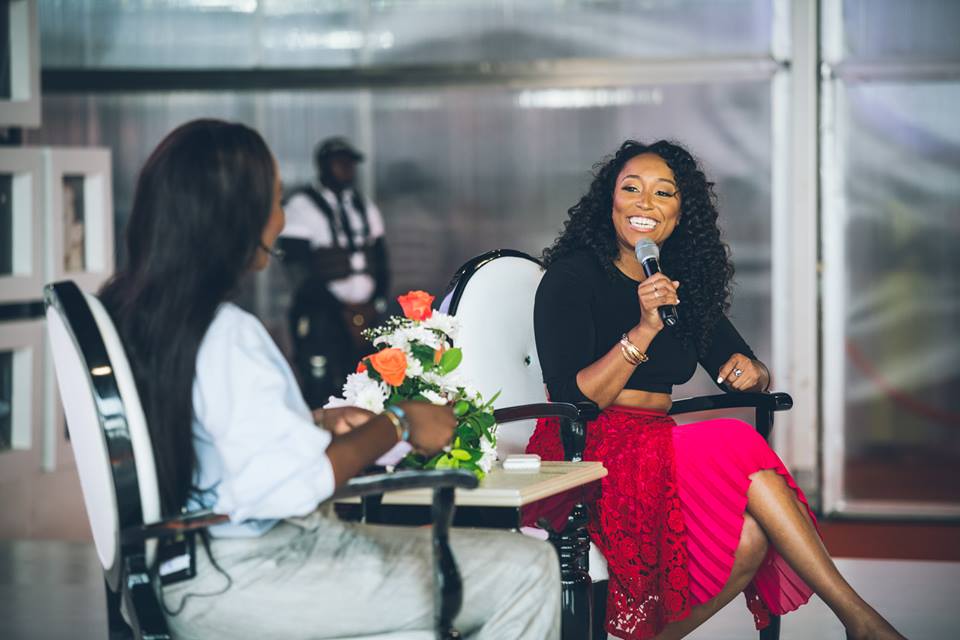 “We close out our June Special Anniversary/Model Edition 2011 by taking a look at the African Fashion Model and her contributions to the Western and global fashion industry. The global fashion industry has undergone an evolution like no other. Where has the African model been? As the West experimented with silhouettes ranging from the hour glass in the 1920s to the inverted triangle in the 1980s, where was the African fashion model?
“We close out our June Special Anniversary/Model Edition 2011 by taking a look at the African Fashion Model and her contributions to the Western and global fashion industry. The global fashion industry has undergone an evolution like no other. Where has the African model been? As the West experimented with silhouettes ranging from the hour glass in the 1920s to the inverted triangle in the 1980s, where was the African fashion model?
As the industry went from one fashion cycle to another, saturating homes, malls, shops, televisions runways and all facets of American and European life with its beautiful aesthetics and designs, where was the African model? What was her role and how significant was she back then? Has there been a shift in her role from the past to present?
As long time readers of Ladybrille Magazine know, the catalyst for establishing Ladybrille was precisely because I wanted these questions, among others, answered. This led to an article I authored in 2006 titled “Demystifying the Exoticness of the African Fashion Model,” and ultimately a pioneer publication on contemporary African fashion & Entertainment for the Western masses via its influencers, aka Ladybrille.
I believe since my article of 2006, the African model has indeed come a long way with more achievements and accomplishments to come in future. We are now in an era where Africa boasts diversity of models in the Western fashion industry. From Ajak Deng, Georgie Badiel, Nana Keita to Nyasha Matonhodze, African fashion models are sashaying down catwalks around the world, featuring in major editorials and campaigns and significantly helping to increase the bottom line of Western fashion and corporate brands. For all of their contributions, we pay our respect and tribute to these long legged beauties who continue to raise a positive profile of Africa around the world.
THE PENDING ARRIVAL OF THE AFRICAN MODEL, 1800s-1960s
In the 1800s, fashion models were unheard of. In fact, there were no catwalks, fashion trend forecasts, fashion weeks, no fashion as we know it. There was, however, the first world famous fashion designer Charles Frederick Worth also known as the “Father of Haute Couture.” Worth was an English fashion designer who began his fashion house in 1858. Prior to 1858, in 1852, he introduced the industry to the first known fashion model, Marie Vernet Worth, his wife.
Marie Vernet modeled for Worth as a “House Model.” This meant she modeled exclusively for Worth’s fashion company. Modeling and models from the 1800s well into the 1900s remained a novel and ever evolving concept and industry; until the 1960s when the fashion model was really ready for take-off.
The 1960s was a time of chaos, the world over. Blacks in the USA were fed up with legally sanctioned racial discrimination and by the mid-1950s into the 1960s, they geared up and conducted non-violent protests ranging from sit-ins and marches to boycotts. Across the world from the USA, Africa itself was going through its own uprising as African citizens across the continent rose up against their colonial masters ushering a period of de-colonization in many of its countries. Within the USA, independent of Blacks fighting for their civil rights, there was a fierce anti-establishment movement that had begun brewing in the 1940s, just after World War II. This movement became overheated and birthed a sub-culture, the hippie movement. Everybody and everything was crazy. The 1960s, arguably, might have seemed like the perfect time for the African model to emerge on the Western scene, but all the madness needed to cool off.
THE ARRIVAL OF THE AFRICAN MODEL
I. THE AFRICAN MODEL EXPANDS THE DEFINITION OF BEAUTY 1970s-1990s

By the 1970s, the craziness around the world had sufficiently cooled off. Supermodel Iman, Ladybrille Woman of the Month March 2011, emerged. Iman made her grand entrance through Vogue Magazine, the fashion bible and simultaneously expanded the definition of beauty while opening the doors for more African and Ethnic models to come. Subsequent after Vogue, Iman appeared on the covers of major magazines and was a muse to some of the biggest design houses in the world including Gianni Versace and Yves Saint Laurent.
II. THE AFRICAN MODEL INTRODUCES ETHNIC COSMETICS FOR WOMEN OF COLOR, 1990s-2000s
In the 1990s, two significant occurrences happened in the Western fashion industry. First, Iman launched her cosmetics line IMAN in 1994, creating a makeup line for all women of color. Back then, it used to be extremely difficult for ethnic women to find foundations that matched their skin tones. While Makeup Art Cosmetics aka M.A.C. was launched in 1984 in Canada, it was not until 1991 that M.A.C. launched in the USA. In addition, it took even more years before M.A.C was able to create true diverse offerings, especially in foundations, for women of color, particularly Black women.
The second major event and contribution by the African model was the further expansion of the definition of beauty. Iman opened the door in 1976 but there were still many, especially among Black Americans and Africans,who could not resonate with Iman because of her arguably Anglo features. In 1995, Sudan’s Alek Wek appeared to fill that void. Hear appearance was met with heavy resistance because she was considered to be unattractive and an extreme polarity of Iman by many Blacks, Africans and Whites. Ultimately, the controversy died down and by then, Alek had succeeded in further expanding the definition of beauty to include very dark skinned “non-Anglo looking” women.
III. THE AFRICAN MODEL BECOMES GLOBAL BEAUTY AMBASSADOR- 2000s to present.
Since Iman and Alek Wek, there have been many dynamic African models ranging from Supermodel Oluchi to Ladybrille’s own Supermodel Nana Keita. Further, within local communities across the USA and Europe, African models have helped thousands of fashion companies push their brands worldwide, directly increasing their bottom line. Career wise, many of these African models have also diversified their portfolios to include that of “Modelpreneurs” with businesses ranging from modeling agencies to design houses, acting to singing careers.
This 2011, highly significant in increasing the bottom line of Western fashion brands has been Liya Kebede, who was recently named the new face of L’Oreal Paris. Kebede’s job as a brand ambassador for L’Oreal makes her the first African model to ink such major global deal. She also joins South African actress Terry Pheto who was signed as a brand ambassador in 2008. Kebede’s L’Oreal deal also confirms the continued focus and expansion by the African model, since her entrance in the 1970s into the Western fashion industry, to show that beauty is indeed diverse. Young women of color around world, because of the African model, now believe they are beautiful just the way they are.
What next for the African Fashion Model? This article analyzed the contributions of the African model in the West consistent with Ladybrille’s brand mission and slogan (#1 African fashion & entertainment magazine for the West). But, make no mistake about it, the African model has also had a powerful impact across the continent of Africa.
Nevertheless, we still ask what new contributions will the African model make in the future? Time will tell. But, with the current list of Ladybrille Magazine’s Africa’s 21 Fresh Model Faces in Fashion, we can only imagine the best is yet to come!
-Uduak Oduok
Founded in 2007, Ladybrille® Magazine is a California based pioneer digital publication demystifying the image of Africans in the west through contemporary African fashion and celebrating the brilliant woman in business and leadership, with an emphasis on the African woman in the diaspora. Our coverage includes stories on capital, access to markets, expertise, hiring and retention, sales, marketing, and promotions.


